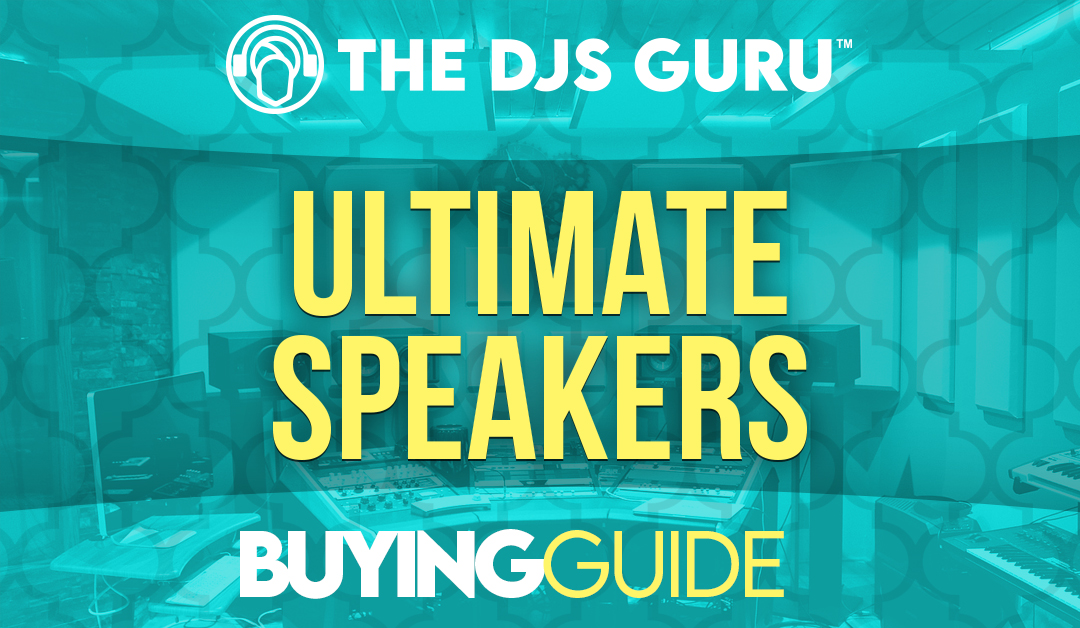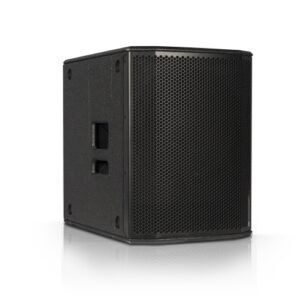The Ultimate Powered Speaker Buying Guide for DJs
One of the first purchases that any new DJ makes as they begin their journey is a pair of speakers. Without a good sound system, a DJ isn’t able to do their job correctly. When it comes to buying speakers, however, there are a lot of options available. Sure, you can make your decision purely on reviews and suggestions from friends. However, the best way to choose a pair of speakers for your business is by understanding your needs.
What size of woofer will work best for your events?
How much power is enough?
In this powered speaker buying guide, we’re going to break down these and many other important questions you should consider when purchasing a sound system.
Looking to buy and need personal support? Visit DJSupplyStore.com
Starting from the bottom
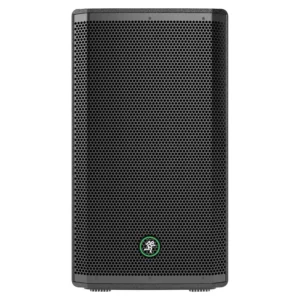
What makes up a speaker
Take, for example, the speaker enclosure (the box that houses everything). Traditionally, these have been made of wood, which offers robust construction and a warm sound. As time has gone on and plastics have become more sturdy, more and more portable PA systems have been made with plastic. There are fans of both types of enclosure, and neither is worse than the other. Each has strengths and downsides. For example. a wood enclosure is known to have a full, warm sound but can get heavy. A plastic enclosure, on the other hand, is more affordable and easier to transport while still having a great sound quality.
The size of the speaker makes a difference as well. Most powered PA speakers are sized based on their woofer, the largest speaker driver typically found at the bottom of the speaker. The woofer handles the lowest frequencies of music, including bass guitar and the low drums of hip-hop and EDM. Standard woofer sizes include 8″, 10″, 12″, and 15″.
When comparing woofers, look at the frequency response spec to see the lowest frequencies the speaker can reproduce. While a larger woofer can theoretically offer a wider range of frequency responses (it can go lower), they aren’t always louder. Additionally, trying to get too much bass out of a PA speaker without using a dedicated subwoofer can muddy up the rest of the sound. The 12″ woofer is probably the most popular and widely used by mobile DJs, but pairing a set of 10″ speakers with a subwoofer is another great option.
*A note about subwoofers*
Subwoofers are speakers dedicated to reproducing the low end of the audio spectrum. Those heart-pounding kick drums and hip-hop beats? Those are handled by subwoofers. Subwoofers are usually made similar to a PA speaker, with one or two larger 15″, 18″, or 21″ drivers inside their cabinet. They’re made to be set on the ground and reinforce the sound from the top speakers. Subwoofers are great to implement into your sound system. They take a lot of the heavy lifting (those beefy bass frequencies) off of the top speakers, allowing them to go louder and sound cleaner. We always advocate for adding a subwoofer to your sound system if possible.
Looking to buy and need personal support? Visit DJSupplyStore.com
Amplification
Amplification is another important component of speaker design. I mentioned earlier that some speakers require external power – these are called passive speakers. While they were the standard 20 years ago, they’ve fallen out of favor for the mobile DJ because they require you to carry more gear. Because the power amplifier is not inside the speaker itself, passive speakers require you to purchase and carry an amplifier separately from the speaker. Passive speakers are slightly cheaper to buy and, when paired with a good amp, can definitely produce amazing sound. Many large production and touring companies still use passive speakers in their business. However, they’re heavy and take up more space in your vehicle. For these reasons, most mobile DJs opt for powered PA speakers.
Powered PA speakers have an amplifier built right into the enclosure. While those who chose to use passive speakers have to worry about matching watts and ohms between amplifiers and speakers, DJs who use powered speakers don’t. The amplifier is perfectly matched to the specifications of the speaker – no need to try and pair them up. Powered speakers are the ultimate one-stop-shop for sound at DJ gigs. There’s no need to carry a separate amp rack and lug it up and downstairs. Most powered DJ speakers also have some sort of mixer built-in as well. This panel on the back of the speaker has inputs and outputs for adjusting multiple audio sources and dialing in volume levels.
It’s all about the POWER
Well, not really. You see, there’s a huge myth out there in the DJ community about something called watts. Yes, those watts, the ones that you see on light bulb boxes. You see, a lot of DJs think that watts are a measurement of volume for a speaker. Their thought is that a 2000-watt speaker is a much better purchase than a 1000-watt speaker, simply because the higher watts mean more volume. The truth is that it doesn’t. This misunderstanding is so prevalent we wrote a whole article about it!
In reality, the true measure of volume from a speaker is the decibel measurement. Decibels are a measure of sound pressure levels and are a much more accurate comparison for volume. The decibel scale is logarithmic, which can be confusing, but there are some simple ways to understand how decibel level influences the volume we hear:
- Most DJ PA speakers fall somewhere between 110-135 peak decibels (dB)
- A 3db difference (a speaker with 132db max vs a speaker with 129db max) is a noticeable difference
- A 10db difference is perceived as “doubling” the volume (a 130db max speaker sounds twice as loud as a 120db max speaker)
So don’t be swayed by marketing that touts 1200 watts vs 800 watts. What’s more important is the max sound pressure level (SPL) or decibel (dB) measurement.
What’s your type?
Alright, take a breather – we’ve covered a lot so far. Now, we’re going to talk about the different types of speakers available to DJs. When most DJs think of PA speakers, they are likely envisioning point source loudspeakers. A point source speaker is what you would consider a “traditional” DJ speaker. It’s usually made up of a rectangular cabinet with a large woofer and a smaller tweeter driver to handle the high frequencies. Some PA speakers add a third midrange driver as well, although the majority just have the woofer and tweeter.
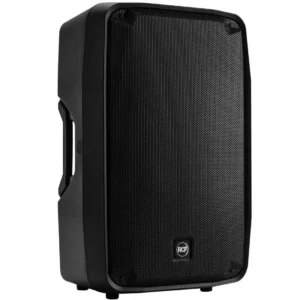
Point source speakers are affordable and well-known, making them a great choice for the new DJ. They also can deliver a LOT of power over long distances, making them great for outdoor applications and large events in big ballrooms. They are usually used in pairs – adding too many line source speakers next to one another can lead to comb filtering, a nasty-sounding side effect of multiple line source speakers.
Ultimate powered speaker buying guide recommendation: Best all-around speaker, school dances, outdoor events, car shows, large corporate functions, sound for bands
Column Arrays
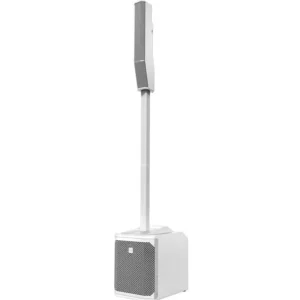
Looking to buy and need personal support? Visit DJSupplyStore.com
Why are so many DJs using column arrays?!
There are a couple of huge benefits to column arrays. First and foremost is the separated woofer. Because the woofer is within its box, it isn’t competing with the other drivers. It’s also directly on the floor, meaning the sound is transmitted through the ground. The ground also adds to the output of the subwoofer, increasing the dB level. In addition to the benefits of the subwoofer, the column design also has some unique properties. Through some advanced science I don’t quite understand, stacking the drivers reduces the verticle dispersion angle of the speaker. In plain talk, this means that less sound is being wasted going up to the ceiling and down at the floor. The setup also widens the horizontal angle, spreading more sound out to the sides to cover a wider area.
All of these points are huge plusses for the column array. It does have a few small downsides to be aware of. The wide dispersion and smaller drivers mean that most smaller column arrays don’t have the output of point source speakers. They work great indoors and with small-moderate crowds but probably can’t handle large school events. They also break down into multiple pieces, which may be more cumbersome to move from gig to gig. All-in-all, they are a great addition to almost any DJ’s arsenal.
Ultimate powered speaker buying guide recommendation: Weddings, small private events, corporate events
Line Arrays
Line arrays are similar to column arrays in some aspects. They consist of many drivers stacked vertically on top of one another. They have wide horizontal dispersion and narrower vertical dispersion. However, in many other aspects, they aren’t so similar. They’re usually much larger, heavier, and more expensive than column arrays. Most are a passive design, meaning you will need racks of amps to keep everything powered.
In reality, line arrays are usually the domain of much larger operations than mobile DJs – concerts, tours, large outdoor venues, etc. However, they’re worth mentioning here because they are the top dog when it comes to raw power. Line array systems can cover huge spaces efficiently. If you’re starting, line arrays probably aren’t your first (or second or third) sound system purchase. But who knows? Maybe someday down the road, you’ll be buying line arrays left and right for your big production company.
A special shoutout: Battery-powered PA speakers
One of the most exciting new technologies in the mobile DJ PA market has been battery power. More and more events are taking place at beaches, ranches, and mountain resorts. Being able to DJ remotely has been a challenge, previously requiring bulky generators to provide power. Now, however, more and more companies are offering attractive, powerful battery speakers at affordable prices. When choosing a battery-powered speaker you can follow the same guidelines for specs above. Consider woofer size, peak dB levels, and frequency response when choosing what speaker is best for your application. While battery-powered speakers aren’t quite as powerful as their corded counterparts, they’re getting better every day.
Wrapping things up
So there you have it – our ultimate powered speaker buying guide! Hopefully, you’ve learned a little more about what to look for when shopping for a new sound system. If you’re looking to pick up some quality-powered PA speakers, make sure to head to djsupplystore.com. Let us know in the comments what speakers you’re rocking or looking to pick up! You can always contact us directly for advice on our contact page as well or use the form below.

